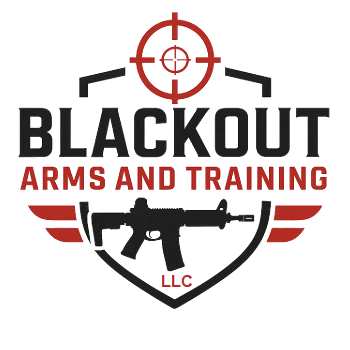Gun Safety Should Always Be The First Priority
By Rollin Guyden Dec 18, 2023 1:30 PM
The first thing you should always think about when you pick up a gun is how to be safe with it. If you are new to firearms, safety probably isn’t the first thought on your mind when you pick up a gun for the first time, but IT SHOULD BE! Guns can be hazardous tools and can cause severe harm to the gun handler and every person within the travel distance of the bullets the gun fires. Understanding and adhering to core safety principles is non-negotiable, whether you’re a seasoned firearm owner or a novice. This article explores the fundamentals of gun safety and underscores why they are vital for everyone.
The Fundamentals of Gun Safety
Depending on who you talk to or who you read, the fundamentals of gun safety may vary from organization to organization; however, most seem to cover the same fundamentals regarding gun safety. Blackout Arms and Training, LLC prescribes to the Five Fundamentals of Gun Safety published by the National African-American Gun Association (NAGGA):
- Treat all firearms as if they are loaded – Assuming a gun is unloaded is a leading cause of accidents. Even if you believe a firearm is empty, handle it with the same caution as a loaded one. Always visually and physically inspect the chamber and magazine to confirm its status, and never rely on someone else’s word.
- Keep your finger off the trigger until ready to fire – Resting a finger on the trigger prematurely—a habit often reinforced by media portrayals—can lead to negligent discharges. Practice “trigger discipline” by keeping your finger alongside the frame until you’ve aimed at your target.
- Keep firearms pointed in a safe direction at all times – Resting a finger on the trigger prematurely—a habit often reinforced by media portrayals—can lead to negligent discharges. Practice “trigger discipline” by keeping your finger alongside the frame until you’ve aimed at your target.
- Know your target and what’s around it – Bullets can penetrate walls, vehicles, or other barriers, potentially striking unintended targets. Always verify what’s in front of and behind your target, considering the firearm’s range and ammunition type.
- Never try to catch a falling firearm – Most firearms are designed not to discharge if dropped. Attempting to catch a falling firearm causes a much higher risk because the likelihood that the trigger can be accidentally pulled by a hand grabbing the gun is much higher than if the weapon hits the ground.
Everyone should consider the fundamentals of gun safety as non-negotiable for anyone handling firearms. Following these fundamentals of gun safety will prevent accidents by reducing negligence, such as when people mishandle a firearm they believed to be unloaded, which accounts for countless avoidable injuries. Strict adherence to safety rules creates habits that override assumptions. Gun safety fosters a culture of respect for firearms. By modeling proper behavior, owners encourage others to prioritize safety, creating a ripple effect of accountability. Failure to follow safety protocols can lead to criminal charges, civil lawsuits, or lifelong guilt if an accident occurs. Proactive prevention protects both lives and livelihoods.
Gun safety isn’t a one-time lesson—it’s a mindset. Even experienced owners must resist complacency and recommit to these principles daily. By treating firearms with respect, educating others, and advocating for safe storage and training, we reduce risks and honor the privilege of responsible gun ownership. Let safety always be your first shot, whether at a range, home, or field.
Remember: A firearm’s greatest safeguard is the person holding it.
